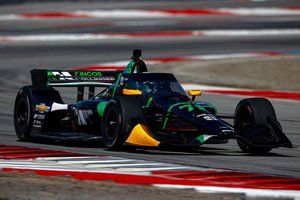FIA explains why groundhog incident couldn't be prevented
FIA race director Charlie Whiting says that the FIA can't eradicate the issue of groundhogs invading the Montreal track after Romain Grosjean hit one in practice for the Canadian GP.

Eric Gilbert





Groundhogs, or marmots, have popped up every year since the event was first held in 1978, and over the years several have met their end after contact with F1 cars.
Grosjean damaged the nose of his Haas in Friday's incident, and the Frenchman was frustrated by the fact that TV pictures had shown an animal in that area, and thus race control was aware that one was on the loose.
"It's a bit disappointing because they showed it on TV before the beginning of the session at Turn 13," said Grosjean.
"And that's exactly where I hit it. I'm surprised they didn't move it.
"It's a shame for the animal, of course, it's a shame for our front wing as well. We are quite limited on spare parts, and losing a front wing like this is a bit disappointing."
The subject was raised when the drivers met with the FIA on Friday afternoon.
"I gave them the full explanation of why that was during the drivers' briefing," said Whiting when asked by Motorsport.com.
"Of course we saw the groundhog, and I did ask whether or not it was feasible to try and catch him, and I was told by those who know much more than I do about groundhogs that it was a very unwise thing to try and do.
"We felt that on balance we thought it was better to leave him there and hope that he didn't make a dash for it, but he did, unfortunately.
"They are indigenous to this island, they are protected, and they do their best to get to places that they are not supposed to go.
"We do our best to try and fill up all the holes, but they just dig new ones, and they quite often get onto the track, as you know. It's not nice, but there's very little that we can actually do to eradicate it."
Be part of Motorsport community
Join the conversationShare Or Save This Story
Subscribe and access Motorsport.com with your ad-blocker.
From Formula 1 to MotoGP we report straight from the paddock because we love our sport, just like you. In order to keep delivering our expert journalism, our website uses advertising. Still, we want to give you the opportunity to enjoy an ad-free and tracker-free website and to continue using your adblocker.























Top Comments